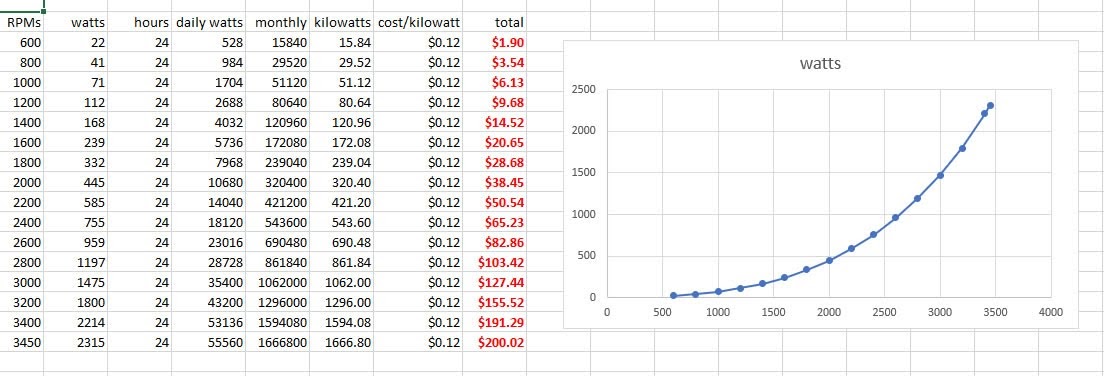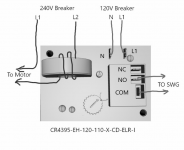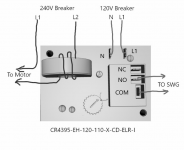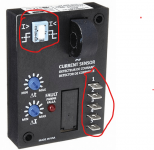First, thanks to all of the posters who make this such a valuable forum! I've only recently joined, but hope to add value over time!
There are several threads regarding using a current-sensing relay to avoid the problem of a SWG running when the pump is NOT running.
Recently, the flow sensor on my SWG failed, causing the salt cell to receive current, even though no water was flowing. Consequently, smoke (or was it hydrogen gas??) started coming from the union on one side of the salt cell. Luckily, I was present, so I cut power quickly.
I understand the concept behind the current-sensing relay, but need help both in choosing the correct relay and also in figuring out the wiring. Other posters on this forum have indicated that they've successfully used these relays, but there isn't really a comprehensive "how to" thread, and I'm not quite sophisticated enough to piece it together from the various postings.
So, I am hoping that someone might provide this "how to" advice, given my particular setup below:
--Pentair IntelliFlo Variable Speed Pump (has internal schedule/timer, but clock resets to midnight upon power failure)
--Hayward Aqua Rite (no timer, it's presently hot 24/7, and relies upon the flow sensor to tell it when to send current to the salt cell)
--Pump and SWG are both at 240v and share the same 20A breaker (along with Pentair 400K BTU gas heater).
PS Another solution is adding an Intermatic-type timer to the SWG. However, this is not ideal, because in the event of a power loss, the pump (with its internal timer) and the SWG (using external timer) will not stay synchronized, and so we're back to the potential for the SWG to get power while the pump is off. (In particular, my Pentair VS pump has the common problem that its internal clock resets to midnight if a power failure exceeds a few seconds. Repairing the pump costs nearly as much as replacing the pump, so repair doesn't does not make sense. If the Pentair pump would actually keep accurate time upon power failure , I could simply run the SWG using a digital timer that includes a battery backup.)
Thanks for the help!
There are several threads regarding using a current-sensing relay to avoid the problem of a SWG running when the pump is NOT running.
Recently, the flow sensor on my SWG failed, causing the salt cell to receive current, even though no water was flowing. Consequently, smoke (or was it hydrogen gas??) started coming from the union on one side of the salt cell. Luckily, I was present, so I cut power quickly.
I understand the concept behind the current-sensing relay, but need help both in choosing the correct relay and also in figuring out the wiring. Other posters on this forum have indicated that they've successfully used these relays, but there isn't really a comprehensive "how to" thread, and I'm not quite sophisticated enough to piece it together from the various postings.
So, I am hoping that someone might provide this "how to" advice, given my particular setup below:
--Pentair IntelliFlo Variable Speed Pump (has internal schedule/timer, but clock resets to midnight upon power failure)
--Hayward Aqua Rite (no timer, it's presently hot 24/7, and relies upon the flow sensor to tell it when to send current to the salt cell)
--Pump and SWG are both at 240v and share the same 20A breaker (along with Pentair 400K BTU gas heater).
PS Another solution is adding an Intermatic-type timer to the SWG. However, this is not ideal, because in the event of a power loss, the pump (with its internal timer) and the SWG (using external timer) will not stay synchronized, and so we're back to the potential for the SWG to get power while the pump is off. (In particular, my Pentair VS pump has the common problem that its internal clock resets to midnight if a power failure exceeds a few seconds. Repairing the pump costs nearly as much as replacing the pump, so repair doesn't does not make sense. If the Pentair pump would actually keep accurate time upon power failure , I could simply run the SWG using a digital timer that includes a battery backup.)
Thanks for the help!
Last edited:





